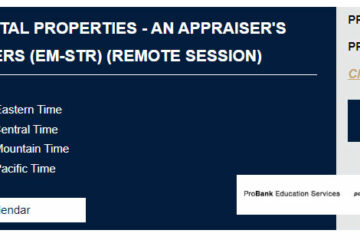Income Cap or DCF Commercial Investment Appraisal Methods
How to know when to pick the correct technique, because they are both loads of fun!
For commercial investment appraisal, most participants, such as appraisers, brokers, realtors, lenders, VC, buyers and sellers understand that rental income or selloff income is the primary driver to determine the value of an asset. However, we need to first understand that in the valuation of real estate, the Income Approach is only one method out of the three methods available. The other methods are the Sales Comparison Approach (aka Market Approach) and the Cost Approach. Secondly, the pattern of the income will help you determine which method is sound.
So, in our example, we are going to talk about retail strip centers. How do I know which income technique to apply if I’m assigned a commercial investment appraisal for the property? Let’s review.
Example A – This property is a 12,000 square foot retail shopping center that is 20 years old with 5 tenants, no vacant units, stable income and expenses over the last 5 years with leases expiring at various times over the next 4 years. The center has an average rental rate of $17.00 per square foot plus $4.00 per square foot in CAM and has been increasing in rent approximately $0.25 per year over the last 5 years. The tenant spaces are similar in size and all are retail tenants. None are restaurants and no tenants have percentage rent clauses.
In this commercial investment appraisal example, I’m going to apply the Income Capitalization method where I take 12 months of income and 12 months of expenses to determine my annual net operating income (aka profit). Then I’m going to apply a capitalization rate (or range if you prefer) to convert that profit to a value. So, if my rent is $17.00 per square foot, my CAM is $4.00 per square foot and my vacancy is 5%, then my EGI is $19.95 per square foot. My expenses are $6.00 per square foot, so my profit is $13.95 per square foot. Based on my market, I’m choosing a capitalization rate of 8%, so my value is ($13.95 psf / 8%) $174.38, or $2,092,500. I applied this technique because I have a stabilized property with predictable income and expenses that don’t change much each year. This technique takes the snapshot of the current year and calculates the value.
Example B – This commercial investment property is a 90,000 square foot, multi-building, retail strip center with Chick-Fil-A ground lease, Burger King ground lease, additional rental income from highway billboards and 30 tenants, two of which are anchor tenants. The center has fluctuating average rents from $15.00 per square foot to $20.00 per square foot year over year and tenants are expiring at various times over the next 3 years. Some tenants have extension options and a few have sent Letters of Intent to extend their leases, but require tenant improvements in order to stay. Of those retail tenants, three are restaurants with percentage rent clauses.
In this example, I’m going to apply the Discounted Cash Flow technique for commercial investment appraisal. This allows me to plot out the rental income and expenses each year for the next 10 to 12 years. That way, if there is going to be a change in rent, for example, the ground lease increases by 2% each year, or taxes are increasing at 2.5% per year, I can account for that in my analysis. Then, for each year, I take the rental income minus the expenses to get the net operating income (profit), just like before. But, instead of taking that profit and converting it to a value, I take each year’s income in my chart for the next 10 to 12 years and discount that profit number to a present value. This is essentially the reverse of interest. It’s the concept that if I know I’m receiving $1.00 in 5 years, it’s not worth $1.00 now, it’s worth less, say $0.85. By applying this concept, we can take the next 10 to 12 years of income from our retail center and convert the annual profits to a current value.
In summary, the discounted cash flow (DCF) technique is applicable when there is an irregular cash flow. Vice versa, if a property has a stable, predictable cash flow, then the income capitalization approach using one year’s income is the best method.
Quick note: Why do we limit the DCF to 10 to 12 years? Well, mathematically, when you discount a profit from beyond 10 to 12 years, it becomes mathematically insignificant. Secondly, it’s reasonable to predict income for the next 10 years, but beyond that becomes anyone’s guess.



